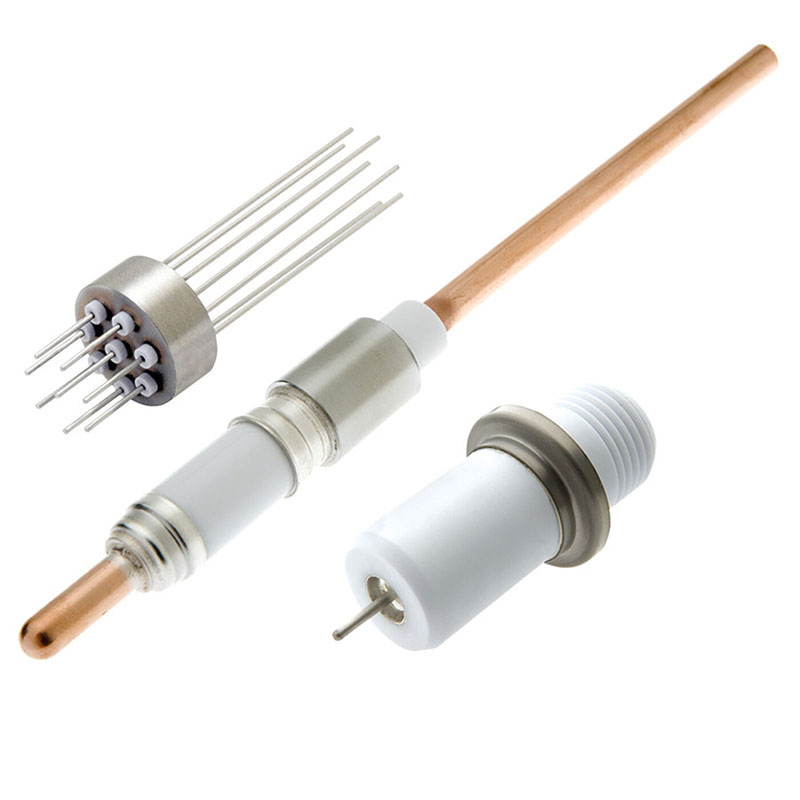The Power of Alumina Ceramic: A Versatile Material for Modern Industries
2025-01-04
In the world of advanced materials, alumina ceramic stands out as one of the most widely used and versatile options across multiple industries. Known for its excellent mechanical properties, high temperature stability, and electrical insulating capabilities, alumina ceramic is an indispensable material in the manufacturing of components that require durability, precision, and reliability.
From electronics to medical devices, alumina ceramics play a pivotal role in shaping the future of modern technologies. In this blog, we’ll explore what alumina ceramics are, their unique properties, and how they are revolutionizing various industries.
What is Alumina Ceramic?
Alumina ceramic, or aluminum oxide ceramic, is a ceramic material made primarily from aluminum oxide. It is one of the most commonly used advanced ceramics due to its remarkable combination of hardness, high-temperature resistance, and insulating properties. Alumina ceramics are manufactured by sintering alumina powder at high temperatures, which results in a dense, rigid, and durable material with superior mechanical and thermal properties.
Alumina ceramics are available in various forms, including rods, plates, tubes, and custom-engineered parts, and can be manufactured with varying levels of purity. The higher the purity of the alumina, the better the material's properties for demanding applications.
Key Properties of Alumina Ceramics
1. High Hardness
Alumina ceramics are renowned for their excellent hardness, making them ideal for applications that require resistance to abrasion and wear. In fact, alumina is one of the hardest ceramic materials, often compared to sapphire and diamond in terms of hardness. This makes it perfect for use in applications like cutting tools, wear-resistant components, and industrial machinery.
2. Excellent Wear and Corrosion Resistance
Thanks to its unique crystalline structure, alumina ceramic is highly resistant to wear, corrosion, and chemical attack. This property makes it a preferred material for harsh environments where components are exposed to high-pressure, abrasive substances or corrosive chemicals.
3. High Temperature Stability
Alumina ceramics can withstand extreme temperatures without deforming or losing their structural integrity. They have a high melting point of approximately 2,072°C (3,762°F), making them ideal for high-temperature applications like furnace linings, heat shields, and insulation.
4. Electrical Insulation
Alumina is an excellent electrical insulator, meaning it prevents the flow of electrical current, making it valuable in electronic and electrical applications. This property is why alumina ceramics are used in electronic components, including insulators, capacitors, and substrates for microelectronics.
5. Good Thermal Conductivity
Despite being a good electrical insulator, alumina ceramics have moderate thermal conductivity. This allows them to be used in applications where controlled heat dissipation is required, such as in electronics and LED packaging.
6. Biocompatibility
Alumina ceramic is highly biocompatible, which means it can be used in medical and dental applications without causing adverse reactions in the body. This makes it ideal for implants, prosthetics, and surgical tools.
Applications of Alumina Ceramics
Alumina ceramics have found applications across a wide variety of industries, thanks to their unique combination of physical and chemical properties. Here are some of the key areas where alumina ceramics are used:
1. Electronics and Electrical Components
Alumina ceramics are commonly used as substrates for electronic components such as capacitors, resistors, and sensors. They are also used in insulating parts for electronic devices due to their high electrical resistance and thermal conductivity. Alumina is frequently found in microelectronics, LED packaging, and circuit boards where reliable electrical insulation is necessary.
2. Medical and Dental Applications
Due to its high biocompatibility, alumina ceramic is used in medical implants, prosthetics, and dental devices. It is commonly used in hip replacement joints, dental crowns, and orthopedic implants, where its resistance to wear, high mechanical strength, and ability to resist chemical degradation are essential.
3. Aerospace and Automotive Industries
Alumina ceramics are used in aerospace and automotive applications that require materials with high wear resistance, thermal stability, and strength. For example, alumina is used in aircraft engine parts, sensors, high-performance seals, and brake components where high temperatures and mechanical stresses are common.
4. Wear-Resistant Components
In industrial applications, alumina ceramics are used to manufacture components that are subjected to high friction and wear, such as valve seats, pumps, and bearings. Its hardness and abrasion resistance ensure that these components can operate reliably over extended periods, even in the most demanding conditions.
5. Cutting Tools
Alumina ceramics are used in the production of cutting tools such as drill bits, grinding wheels, and knives due to their hardness and resistance to wear. These tools are capable of withstanding high-speed cutting operations without dulling or breaking, making them invaluable in industries such as manufacturing, metalworking, and mining.
6. Ceramic Armor
One of the notable uses of alumina ceramics is in the production of ceramic armor. Its high hardness and toughness make it an ideal material for ballistic protection, such as in armored vehicles, personal protective equipment, and military gear. Alumina-based ceramic armor provides lightweight protection against high-velocity projectiles and is often used in combination with other materials to enhance overall protection.
7. Energy and Nuclear Applications
In the energy sector, alumina ceramics are used in nuclear reactors and energy production facilities due to their ability to withstand extreme temperatures and radiation. Alumina is also used in fuel cell technology, where its high thermal conductivity helps manage heat dissipation in the system.
The Advantages of Alumina Ceramic
1. Durability
Alumina ceramics are known for their long-lasting durability. The material’s resistance to wear, corrosion, and extreme temperatures ensures that components made from alumina have a long service life, even in the harshest conditions.
2. Cost-Effective
Despite its advanced properties, alumina ceramic is relatively inexpensive compared to other high-performance ceramics, such as zirconia. This makes it a cost-effective solution for a variety of applications without compromising on quality or performance.
3. Customization and Versatility
Alumina ceramics can be manufactured in a wide range of shapes, sizes, and grades to meet the specific needs of different industries. Whether it's for high-precision components or larger industrial parts, alumina ceramics can be tailored to suit the requirements of the application.
4. Environmentally Friendly
Alumina is a naturally abundant material, and the production of alumina ceramics is relatively energy-efficient compared to other materials. Additionally, because alumina is chemically inert and non-toxic, it is considered an environmentally friendly material.
Challenges and Limitations
While alumina ceramic offers a wealth of advantages, there are some limitations that should be considered. For instance, it can be brittle and prone to fracture under certain conditions, especially when subjected to sudden impact or extreme mechanical stresses. In some applications, the use of composite materials may be more suitable to enhance toughness and reduce the risk of breakage.
Conclusion
Alumina ceramics are an essential material in modern industry, providing an outstanding combination of strength, durability, and versatility. Whether in high-performance automotive components, electronic devices, medical implants, or cutting tools, alumina ceramics continue to be a driving force in technological innovation. Their ability to withstand extreme conditions while providing superior wear resistance, thermal stability, and electrical insulation makes them indispensable in numerous applications.
As industries continue to evolve and demand more advanced materials, alumina ceramics will remain at the forefront, playing a crucial role in everything from consumer electronics to aerospace and medical technology. With their proven track record of performance, it’s clear that alumina ceramics are set to continue shaping the future of manufacturing and technology for years to come.



